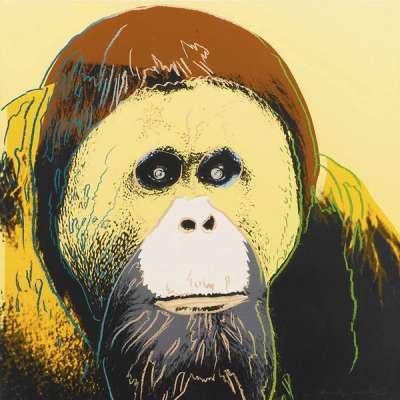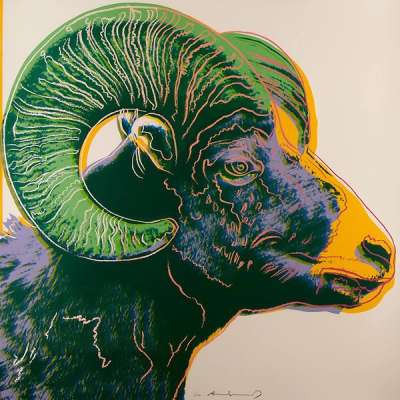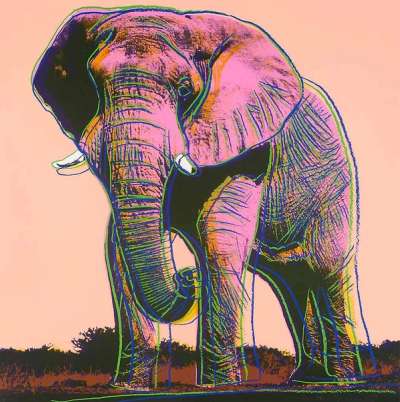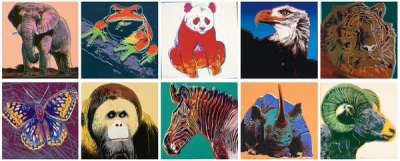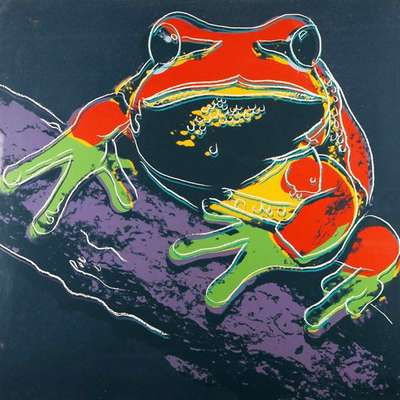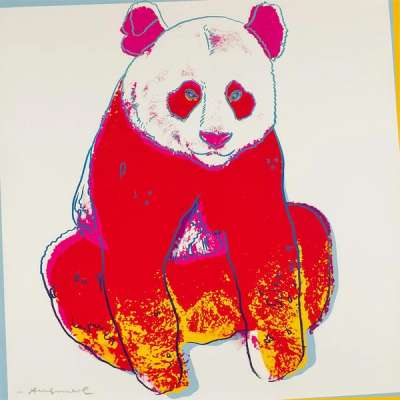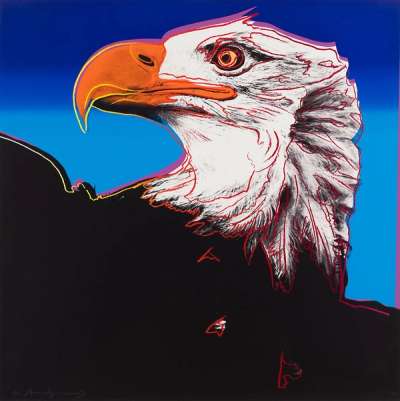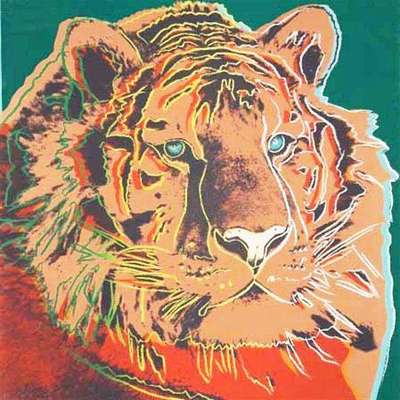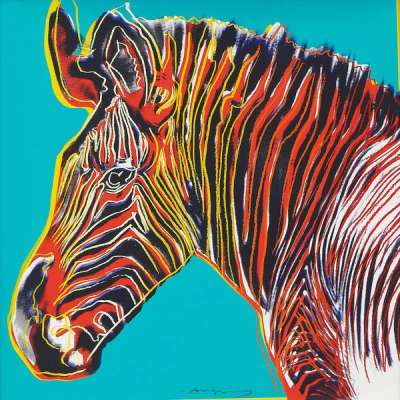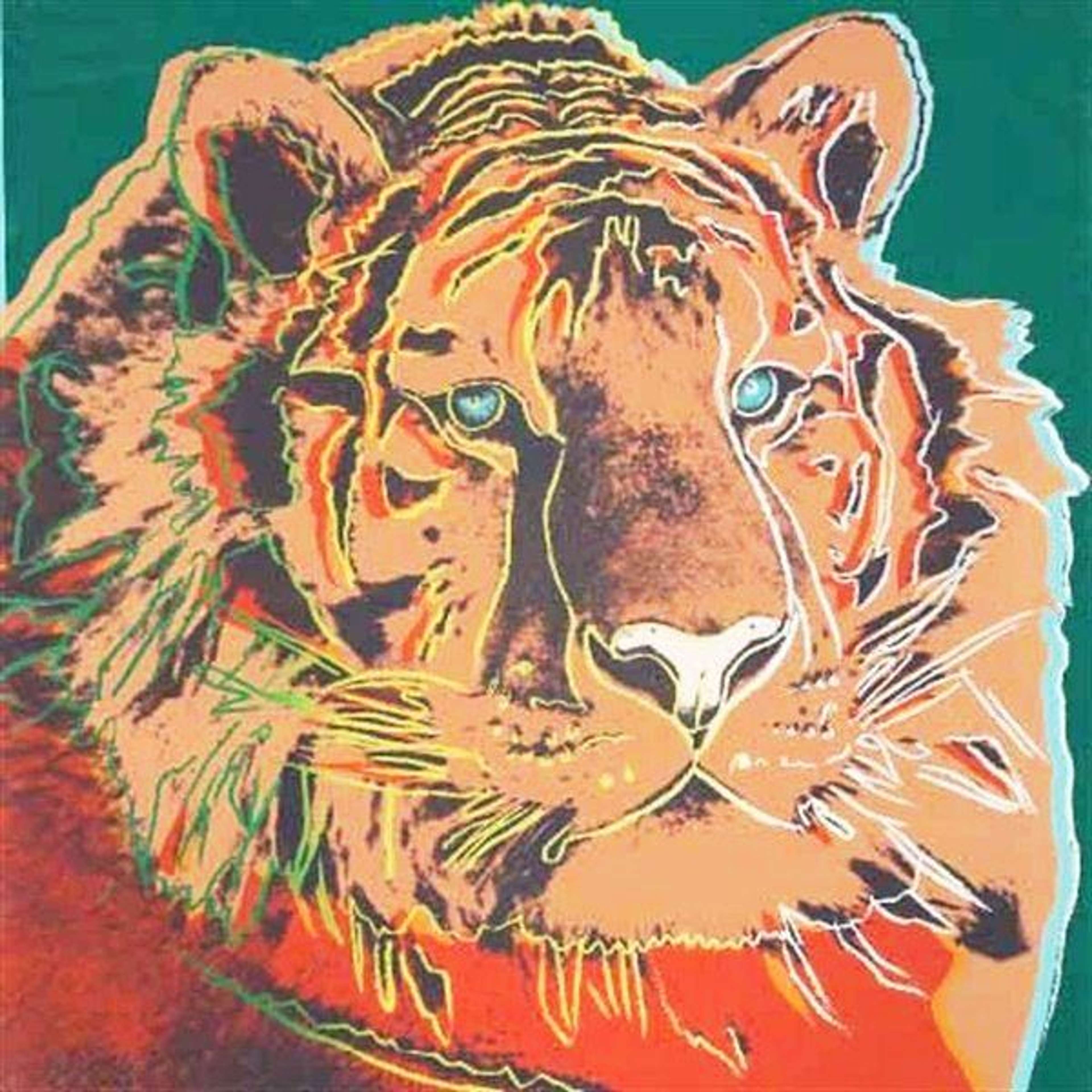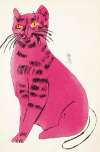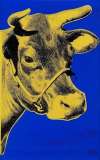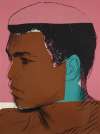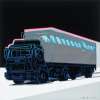Endangered
Species
Commissioned in 1983 by New York Gallerists and Environmental Activists, Andy Warhol’s Endangered Animals series draws our attention to the plight of species around the world. Enduringly relevant, this series, with its eye-catching and gaudy colouring, unsettles our familiarity with the species at risk.
Andy Warhol Endangered Species For sale
Endangered Species Value (5 Years)
Works from the Endangered Species series by Andy Warhol have a strong market value presence, with 281 auction appearances. Top performing works have achieved standout auction results, with peak hammer prices of £2919000. Over the past 12 months, average values across the series have ranged from £49168 to £170000. The series shows an average annual growth rate of 11.99%.
Endangered Species Market value
Auction Results
| Artwork | Auction Date | Auction House | Return to Seller | Hammer Price | Buyer Paid |
|---|---|---|---|---|---|
 Grevy's Zebra (F. & S. II.300) Andy Warhol Signed Print | 27 Nov 2025 | Koller Zurich | £127,500 | £150,000 | £190,000 |
 Pine Barrens Tree Frog (F. & S. II.294) Andy Warhol Signed Print | 26 Oct 2025 | SBI Art Auction | £68,000 | £80,000 | £90,000 |
 Siberian Tiger (F. & S. II.297) Andy Warhol Signed Print | 20 Sept 2025 | Shinwa Art Auction | £127,500 | £150,000 | £180,000 |
 Black Rhinoceros (F. & S. II.301) Andy Warhol Signed Print | 20 Sept 2025 | Shinwa Art Auction | £68,000 | £80,000 | £100,000 |
 Sea Turtle (F. & S. II.360A) Andy Warhol Signed Print | 17 Jul 2025 | Mallet Japan | £42,500 | £50,000 | £60,000 |
 Bald Eagle (F. & S. II.296) Andy Warhol Signed Print | 24 Jun 2025 | Phillips New York | £102,000 | £120,000 | £160,000 |
 African Elephant (F. & S. II.293) Andy Warhol Signed Print | 5 Jun 2025 | Phillips London | £136,000 | £160,000 | £220,000 |
 Orangutan (F. & S. II. 299) Andy Warhol Signed Print | 5 Jun 2025 | Phillips London | £110,500 | £130,000 | £180,000 |
Sell Your Art
with Us
with Us
Join Our Network of Collectors. Buy, Sell and Track Demand
Meaning & Analysis
10 screenprints from 1983, Warhol’s Endangered Species portfolio was a project first commissioned by New York Gallerists and Environmental Activists. The series was intended to bring attention to the world’s endangered animals. It features the Bald Eagle, Black Rhinoceros, African Elephant, Orangutan, Grévy’s Zebra, Bighorn Ram, Giant Panda, Pine Barrens Tree Frog, San Francisco Silverspot Butterfly and the Siberian Tiger.
Warhol’s artwork refreshes the viewer’s perspective by bringing us into a new relationship with the object and its image. Supermarket products, news media, film stars and advertisements are all given the artist’s signature treatment: casting everyday subjects in kaleidoscopic colour and repeating images machine-like and in series. The artist’s Endangered Species is no different. The psychedelic luminous colours and energetic lines animate his subject. The threatened animals are represented in the same way as the artist’s film and TV stars: as cultural icons that are impossible to ignore.
Warhol understood the power of the image and his art. He donated a number of these works to raise funds and awareness. The artist was a lifelong lover of animals and nature. Nature and wildlife can be found throughout his work. His early illustrations featured cats and dogs, most notably in the children’s book Cats Name(d) Sam and One Blue Pussy created in collaboration with his mother Julia Warhola and published in 1954. Legend has it that the artist and his mother lived in a New York townhouse surrounded by cats that were all named Sam, apart from one called Hester. Warhol went on to own dogs and paint dog portraits. His love for animals can be seen in the way he photographed and painted these canine companions. Animals and nature appear in other later significant bodies of work, including Flowers and the Cow and Fish wallpaper pieces.


